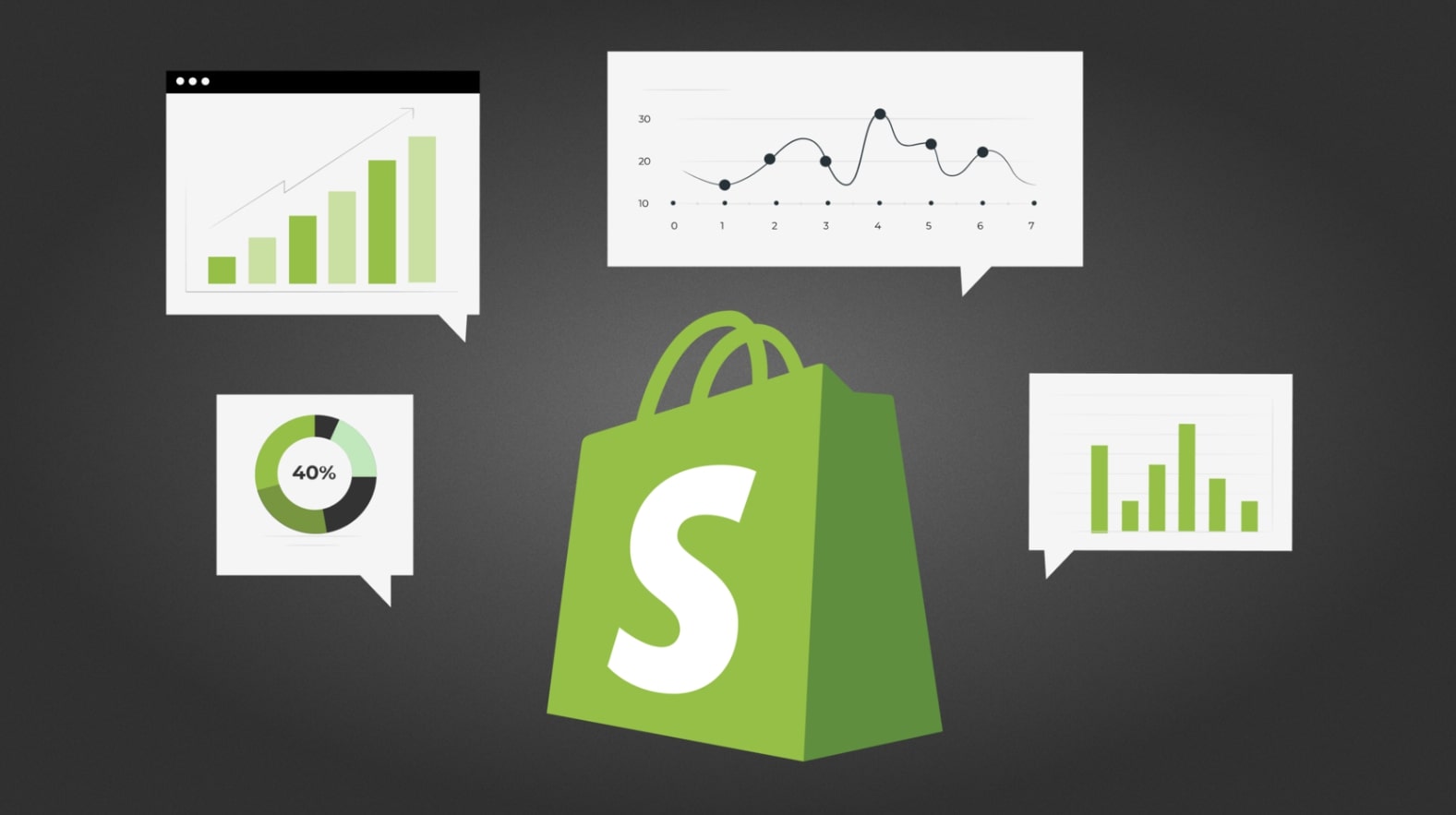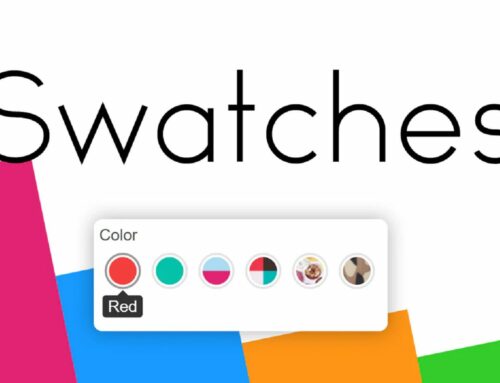Shopify reports let you see which of your products are selling, when sales occur most frequently, and the origins of your visitors. You can enhance your Shopify conversion rate and cut down on wasteful spending by being aware of how your store operates. This article explains how to use Shopify reports to understand your store step-by-step.
Contents
Introduction to Shopify Reports
What are Shopify Reports?
Shopify reports provide a comprehensive overview of your online store’s data presented in both graphical and tabular formats. These reports are organized into categories, similar to folders for different topics.

The reports list contains a variety of default reports created by Shopify, but you have the flexibility to modify these reports according to your requirements. If you are subscribed to the Advanced Shopify plan or a higher tier, you can save the customized reports.
What Advantages Come with Investing in Shopify Reports?
Shopify offers a diverse selection of reports that provide a comprehensive range of data about your store. In addition, you can create customized reports to effectively filter and organize this data.
Thanks to using the data available in Shopify reports, you will be better equipped to identify and address any issues within your store promptly. These reporting tools enable you to gain a deeper understanding of customers, products, sales targets, marketing strategies, inventory management, and other crucial aspects. Hence, you can make well-informed decisions to support the growth of the business.
Types of Shopify Reports
You’ll be faced with a ton of data when you open analytics, and that volume soon becomes too much to handle. Therefore, there are several kinds of Shopify reports that store owners can refer to that are broken out here:
Shopify Acquisition Reports
Shopify acquisition reports provide useful information to the visitors of the website, focusing on 3 key metrics:
- Sessions over time: This metric showcases the number of visitors your website receives within a specific time frame.
- Sessions by referrer: This metric reveals the number of visitors and sessions that are referred to the website through various sources, such as affiliate links or Facebook ads.
- Sessions by location: This metric displays the countries and regions from which your website’s visitors are accessing your online store.

It’s important to understand that the number of visits and visitors is determined by cookies, which consist of one identifier for the device (visitor) and another for the duration of the visit. Consequently, one visitor can generate multiple visits.
Furthermore, it’s worth noting that a visit automatically concludes after 30 minutes of inactivity or at midnight UTC. Keep in mind that data may take a few minutes to refresh, so if you don’t see the most recent information, try reopening or refreshing the report.
Shopify Behavior Reports
Shopify behavior reports are designed to analyze the actions undertaken by your visitors, offering a diverse range of valuable insights that can greatly enhance the ability to develop improved promotional packages and enhance the effectiveness of targeted upselling strategies.
The information derived from behavior reports plays a crucial role in enabling you to make well-informed decisions regarding the organization of your store. Through identifying key areas that require enhancement, behavior reports offer a wealth of valuable data that can be utilized to optimize the store’s performance.
The percentage of online store visitors who have purchased over a specific time is displayed in the Online Store Conversion Over Time report.
- The Online Store Speed report compares your store’s performance to industry standards and other Shopify stores.
- The Product Recommendation Conversions Over Time report shows how effectively your store is converting product recommendations into sales.
- The Top Online Store Searches report displays the search terms used by your customers when looking for products or pages in your store. Additionally, the Top Online Store
- Searches with No Results report shows the most common searches that yield no results.
- The Sessions by Landing Page report shows which pages your visitors land on when first visiting your online store.
- The Sessions by Device report displays the types of devices that are most frequently used to access your website.
- The Online Store Cart Analysis report provides insights into the products that your visitors frequently add together to their cart, which can be used to create product bundles and upselling opportunities.
Comprehending how visitors engage with the store can provide useful information for a multitude of business choices. Thereby, through leveraging the knowledge of product associations, you can effectively strategize inventory management, determine optimal product categorization, identify products that would thrive under a marketing campaign, and gain numerous other advantages.
Shopify Customers Reports
Shopify customer reports provide information about the customer base, offering detailed information about their average order count, purchase totals, and anticipated purchase value. These reports serve as a great tool for determining how to effectively segment your audience when developing a marketing campaign.

There are various types of customer reports that you can generate to gain a comprehensive understanding of the customer base:
- Customers over time: Shows the number of customers that made orders from your store during a chosen time frame.
- First-time vs returning customer sales: Examines the difference in order values made by first-time and returning customers.
- Customers by location: View purchase and expenditure information for customers in a particular area.
- Returning customers: View information about patrons with a minimum of two orders in their order history.
- One-time customers. Customers who have placed just one order in the past are displayed with info about them.
- Customers who pose a risk: Provides information about loyal clients who haven’t made an order in a long.
- Loyal customers: Contains information about clients who make regular purchases from you.
Shopify Inventory Reports
Shopify inventory reports provide you with a month-end overview of the current stock, enabling you to monitor daily sales quantities and make more educated decisions about what and when to replenish.
The following are some Shopify inventory reports that owners of stores can create:
- The month-end inventory snapshot: Indicate the amount of each product variant that is still available in stock at the end of the month.
- Average inventory sold daily: Display the typical quantity of each product variety sold each day.
- Inventory % sold: Give you the ability to see the percentage of stock sold for each product variation over a period that you can customize.
- ABC breakdown by item: Assign a letter grade to each product variant according to the portion of revenue that the variant has brought in from your total sales.
- Product sell-through rate: Indicate how much of the whole inventory you’ve sold in a certain amount of time.
- Days left in inventory: Calculate the projected lifespan of your present inventory by using historical sales data for the products you have available.
Shopify Marketing Reports
Based on how customers interact with your store, marketing reports can help you identify which marketing channels are driving the most traffic, sales, and total value. This can be quite helpful in figuring out which marketing channels to focus on and what kinds of marketing work best.

Shopify marketing reports include the following types of information:
- Marketing sales tracking: Indicate the number of sales that can be traced back to specific marketing efforts.
- Marketing session tracking: Reveal the amount of web traffic generated by specific marketing campaigns.
- First interaction conversion: Display the number of orders and average value from first-time visitors, allowing store owners to identify the most effective referrals.
- Last interaction conversion: Show the number of orders from users who have not returned to the site since purchasing.
- Attribution model comparison: Compare first and last interaction data to identify any significant drop-off of previous customers.
To sum up, marketing reports may require up to 24 hours for the data to be fully populated. Therefore, if you intend to assess the effectiveness of a particular marketing campaign, please wait at least one day after the campaign concludes before generating the marketing report.
Shopify Order Reports
Shopify order reports are useful for providing details on the number of your orders, delivery schedules, and refunds. You can learn more about which of the products are your greatest sellers and which are most frequently returned by looking through order records.
Order reports can be very helpful in determining customer satisfaction levels or identifying faulty goods. For instance, if you observe that a product is being returned more frequently than other products, order reports may help identify a possible issue with the product’s quality or design.
A few order reports that you can create are as follows:
- Track Order History: Monitor the quantity of orders that have been successfully delivered within a specific timeframe.
- Analyze Order Processing: Evaluate the duration it takes for orders to progress through the fulfillment cycle, starting from order placement until final delivery.
- Monitor Fulfillment Trends: Observe the overall count of orders that have been fulfilled, shipped, or delivered within a chosen time frame.
Shopify Profit Reports
Shopify profit reports provide important details about the online store’s expenses, margins, and earnings. When it comes to accounting, it’s crucial to be able to observe the movement of money into and out of the business.
The profit reports that Shopify merchants can produce consist of:
- Product Profit Analysis: This report displays the overall profit generated by each product during a specified time period.
- Variant Specific Product Profit: This report provides insights into the total profit generated by specific product variants over a selected period.
- Point of Sale Profit Breakdown: This report showcases the gross profit earned at each point of sale location, making it particularly beneficial for retail businesses operating multiple physical stores.
NOTE: To ensure precise data in the profit reports, it is essential to include the cost per item attribute for every product variant available on the eCommerce platform.
Shopify Retail Sales Reports
Shopify retail sales reports are essential for businesses that conduct in-person sales because they provide information on items, variations, and personnel that are unique to the point of sale location or locations.
Retail sales reports can provide you with useful information on the sales performances of your employees as well as assist you in determining which products sell best in certain regions.

The retail sales reports that store owners can generate are as follows:
- The report on retail sales by product provides a detailed breakdown of the total sales made by each product, excluding shipping costs.
- Retail sales by product variant SKU report offers a comprehensive analysis of the total sales made by each product variant, without taking into account shipping costs.
- Retail sales by product vendor report compares the data from different vendors and the products they offer, grouped by POS location.
- The retail sales by product type report displays the sales of specific product types, categorized by POS location.
- Retail sales by Point of Sale location report showcases the sales made by each POS location, enabling you to identify the best-performing retail locations.
- The retail sales by staff at register report is ideal for tracking individual sales goals for employees, as it shows the sales made by each staff member.
- The retail sales by staff who helped with sale report displays the sales made by staff who were attributed line-item sales at checkout, which can be valuable for tracking employee sales goals.
Shopify Sales Reports
Shopify sales reports display details about your customers’ orders according to parameters like product or sales channel, just like retail sales reports do. Shopify sales reports are particularly useful for measuring the value of your sales over extended periods of time because they account for returns as well.
When it comes to Shopify sales reports, the day the transaction was made will show a positive figure, and the day the return was processed will show a negative value.
Shopify retailers can choose from a variety of sales reports:
- Track your progress with Sales over time, which displays the number of orders and total sales made during a specific period.
- Get a detailed breakdown of the total sales of a product with Sales by product, excluding shipping.
- Analyze the total sales of a variant with Sales by product variant SKU, excluding shipping
- Keep track of sales provided by each vendor with Sales by product vendor.
- Monitor your sales grouped by the name of a discount used with Sales by discount.
- Identify the origin of your visitors with Sales by traffic referrer, such as a specific web-page, online ad, or google search.
- Group your sales by the country or region of the billing address for the order with Sales by billing location.
- Analyze your sales grouped by the currency used at checkout with Sales by checkout currency, especially helpful for international store owners.
- Get insights into your sales channels with Sales by channel, such as Facebook, POS, or your Online Store.
- Analyze your orders by customer over a selected period of time with Sales by customer name.
- Keep track of your store’s average order value over time with Average order value over time.
Shopify Custom Reports
Shopify merchants can customize their reports by utilizing the filtering and editing features. This allows them to target specific data that is uniquely valuable to their store.
For instance, when a marketing campaign was conducted to promote a new product and target users on various platforms such as Twitter, Facebook, Google ads, and email marketing, a marketing report could be generated to show the sales attributed to marketing.
However, with Shopify custom reports, merchants can delve deeper into the data and analyze sessions, leads, and sales from each marketing channel. This provides a more comprehensive understanding of which platform was the most valuable for the campaign. Therefore, to create a Shopify custom report, let’s navigate to Analytics > Reports and select the option to create a custom report.
How to Use Shopify Reports to Optimize Your Store
You can gradually optimize the store by making minor adjustments and keeping a close eye on the Shopify data. Here are some of the most beneficial reports to make the store successful:
Reports to Help Promote Better
PPC (Pay Per Click), SEO and Affiliate Marketing
Adding columns for Referrer Source, Referrer Site, and Conversion Rate to a “Sessions Over Time” report will provide valuable information on the number of visitors each marketing channel is driving to your store. This customization will also reveal the percentage of visitors from each channel who ultimately make a purchase. To gain even more detailed insights, consider including columns for UTM Campaign Source and Referrer Search Terms.
Organic And Paid Search
The “Sessions Over Time” report in Shopify provides information on the search terms that drive traffic to your online store. However, this time, the filters you use will be slightly modified. To obtain relevant information, let’s create columns for the referrer site, conversion rate, and referrer search terms. Additionally, to eliminate any irrelevant data, apply a filter to the Referral Site and choose the search engines that are most relevant to the business.

In addition, looking through your “Visitors By Landing Page” report is another approach to obtain important data for search engine optimization and search engine advertising. Conversion Rate, Bounce Rate, and Referrer Search Term columns should be placed in place of the Landing Page Path column.
Reports to Help Improve the User Experience (UX)
The “Top Online Store Searches” report is a great tool for enhancing the user experience. Thanks to analyzing the keywords that visitors search for while browsing the site, this report provides valuable insights into customer behavior. Although it represents only a fraction of your overall traffic, this information can offer remarkable insights into your customer base and their thought processes.
- What To Call Your Products. When it comes to naming your products, pay attention to the emerging patterns in user search terms. Incorporating these keywords into your product titles not only facilitates easier discovery for your visitors but also enhances your search engine optimization (SEO) efforts.
- Which Products to Stock. Shopify reports can help you identify any gaps in your inventory. If there are products that people are searching for but you don’t have in stock, you may be missing out on a significant number of potential customers.
- Where the Problems Are. Shopify reports can shed light on any user experience (UX) issues within your store. If multiple visitors are struggling to find the same thing, it could indicate a problem with the UX design of the website.
Shopify Reports – The Bottom Line
To sum up, Shopify reports are a fantastic way to help you understand the Shopify business, which will benefit you in more ways than just decision-making. The data from the store can tell you what the consumers think of the goods you sell and how they would like to see them operated. This will not only help you optimize the store, but it will also point you in the right direction.
BSS Commerce Shopify hopes that this post will help you know more about how Shopify basic reports work as well as the types of Shopify ecommerce reports. If you want to learn more about Shopify and eCommerce, the BSS Commerce blog is a helpful page that you shouldn’t miss out on.
Discover tips to improve your Shopify store conversion rate:




